US Airways 2008 Annual Report Download - page 24
Download and view the complete annual report
Please find page 24 of the 2008 US Airways annual report below. You can navigate through the pages in the report by either clicking on the pages listed below, or by using the keyword search tool below to find specific information within the annual report.-
 1
1 -
 2
2 -
 3
3 -
 4
4 -
 5
5 -
 6
6 -
 7
7 -
 8
8 -
 9
9 -
 10
10 -
 11
11 -
 12
12 -
 13
13 -
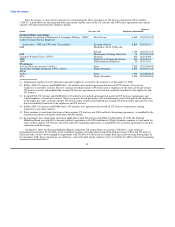 14
14 -
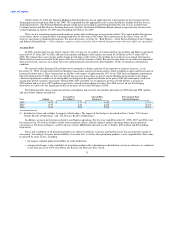 15
15 -
 16
16 -
 17
17 -
 18
18 -
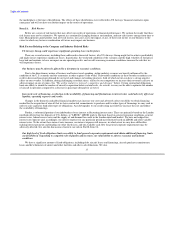 19
19 -
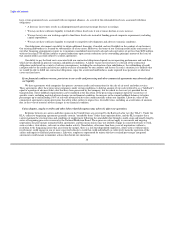 20
20 -
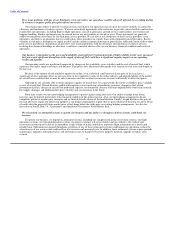 21
21 -
 22
22 -
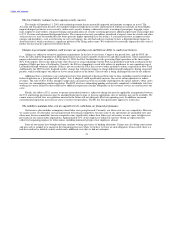 23
23 -
 24
24 -
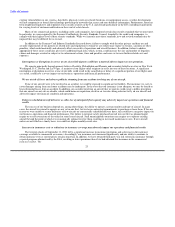 25
25 -
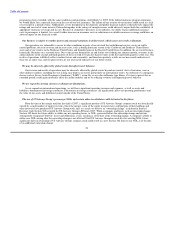 26
26 -
 27
27 -
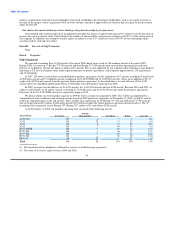 28
28 -
 29
29 -
 30
30 -
 31
31 -
 32
32 -
 33
33 -
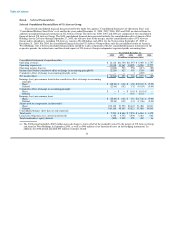 34
34 -
 35
35 -
 36
36 -
 37
37 -
 38
38 -
 39
39 -
 40
40 -
 41
41 -
 42
42 -
 43
43 -
 44
44 -
 45
45 -
 46
46 -
 47
47 -
 48
48 -
 49
49 -
 50
50 -
 51
51 -
 52
52 -
 53
53 -
 54
54 -
 55
55 -
 56
56 -
 57
57 -
 58
58 -
 59
59 -
 60
60 -
 61
61 -
 62
62 -
 63
63 -
 64
64 -
 65
65 -
 66
66 -
 67
67 -
 68
68 -
 69
69 -
 70
70 -
 71
71 -
 72
72 -
 73
73 -
 74
74 -
 75
75 -
 76
76 -
 77
77 -
 78
78 -
 79
79 -
 80
80 -
 81
81 -
 82
82 -
 83
83 -
 84
84 -
 85
85 -
 86
86 -
 87
87 -
 88
88 -
 89
89 -
 90
90 -
 91
91 -
 92
92 -
 93
93 -
 94
94 -
 95
95 -
 96
96 -
 97
97 -
 98
98 -
 99
99 -
 100
100 -
 101
101 -
 102
102 -
 103
103 -
 104
104 -
 105
105 -
 106
106 -
 107
107 -
 108
108 -
 109
109 -
 110
110 -
 111
111 -
 112
112 -
 113
113 -
 114
114 -
 115
115 -
 116
116 -
 117
117 -
 118
118 -
 119
119 -
 120
120 -
 121
121 -
 122
122 -
 123
123 -
 124
124 -
 125
125 -
 126
126 -
 127
127 -
 128
128 -
 129
129 -
 130
130 -
 131
131 -
 132
132 -
 133
133 -
 134
134 -
 135
135 -
 136
136 -
 137
137 -
 138
138 -
 139
139 -
 140
140 -
 141
141 -
 142
142 -
 143
143 -
 144
144 -
 145
145 -
 146
146 -
 147
147 -
 148
148 -
 149
149 -
 150
150 -
 151
151 -
 152
152 -
 153
153 -
 154
154 -
 155
155 -
 156
156 -
 157
157 -
 158
158 -
 159
159 -
 160
160 -
 161
161 -
 162
162 -
 163
163 -
 164
164 -
 165
165 -
 166
166 -
 167
167 -
 168
168 -
 169
169 -
 170
170 -
 171
171 -
 172
172 -
 173
173 -
 174
174 -
 175
175 -
 176
176 -
 177
177 -
 178
178 -
 179
179 -
 180
180 -
 181
181 -
 182
182 -
 183
183 -
 184
184 -
 185
185 -
 186
186 -
 187
187 -
 188
188 -
 189
189 -
 190
190 -
 191
191 -
 192
192 -
 193
193 -
 194
194 -
 195
195 -
 196
196 -
 197
197 -
 198
198 -
 199
199 -
 200
200 -
 201
201 -
 202
202 -
 203
203 -
 204
204 -
 205
205 -
 206
206 -
 207
207 -
 208
208 -
 209
209 -
 210
210 -
 211
211 -
 212
212 -
 213
213 -
 214
214 -
 215
215 -
 216
216 -
 217
217 -
 218
218 -
 219
219 -
 220
220 -
 221
221 -
 222
222 -
 223
223 -
 224
224 -
 225
225 -
 226
226 -
 227
227 -
 228
228 -
 229
229 -
 230
230 -
 231
231 -
 232
232 -
 233
233 -
 234
234 -
 235
235 -
 236
236 -
 237
237 -
 238
238 -
 239
239 -
 240
240 -
 241
241 -
 242
242 -
 243
243 -
 244
244 -
 245
245 -
 246
246 -
 247
247 -
 248
248 -
 249
249 -
 250
250 -
 251
251 -
 252
252 -
 253
253 -
 254
254 -
 255
255 -
 256
256 -
 257
257 -
 258
258 -
 259
259 -
 260
260 -
 261
261 -
 262
262 -
 263
263 -
 264
264 -
 265
265 -
 266
266 -
 267
267 -
 268
268 -
 269
269 -
 270
270 -
 271
271 -
 272
272 -
 273
273 -
 274
274 -
 275
275 -
 276
276 -
 277
277 -
 278
278 -
 279
279 -
 280
280 -
 281
281 -
 282
282 -
 283
283 -
 284
284 -
 285
285 -
 286
286 -
 287
287 -
 288
288 -
 289
289 -
 290
290 -
 291
291 -
 292
292 -
 293
293 -
 294
294 -
 295
295 -
 296
296 -
 297
297 -
 298
298 -
 299
299 -
 300
300 -
 301
301 -
 302
302 -
 303
303 -
 304
304 -
 305
305 -
 306
306 -
 307
307 -
 308
308 -
 309
309 -
 310
310 -
 311
311 -
 312
312 -
 313
313 -
 314
314 -
 315
315 -
 316
316 -
 317
317 -
 318
318 -
 319
319 -
 320
320 -
 321
321 -
 322
322 -
 323
323 -
 324
324 -
 325
325 -
 326
326 -
 327
327 -
 328
328 -
 329
329 -
 330
330 -
 331
331 -
 332
332 -
 333
333 -
 334
334 -
 335
335 -
 336
336 -
 337
337 -
 338
338 -
 339
339 -
 340
340 -
 341
341 -
 342
342 -
 343
343 -
 344
344 -
 345
345 -
 346
346 -
 347
347 -
 348
348 -
 349
349 -
 350
350 -
 351
351 -
 352
352 -
 353
353 -
 354
354 -
 355
355 -
 356
356 -
 357
357 -
 358
358 -
 359
359 -
 360
360 -
 361
361 -
 362
362 -
 363
363 -
 364
364 -
 365
365 -
 366
366 -
 367
367 -
 368
368 -
 369
369 -
 370
370 -
 371
371 -
 372
372 -
 373
373 -
 374
374 -
 375
375 -
 376
376 -
 377
377 -
 378
378 -
 379
379 -
 380
380 -
 381
381 -
 382
382 -
 383
383 -
 384
384 -
 385
385 -
 386
386 -
 387
387 -
 388
388 -
 389
389 -
 390
390 -
 391
391 -
 392
392 -
 393
393 -
 394
394 -
 395
395 -
 396
396 -
 397
397 -
 398
398 -
 399
399 -
 400
400 -
 401
401
 |
 |

Table of Contents
Our ability to operate and grow our route network in the future is dependent on the availability of adequate facilities and
infrastructure throughout our system.
In order to operate our existing flight schedule and, where appropriate, add service along new or existing routes, we must be able to
obtain adequate gates, ticketing facilities, operations areas, slots (where applicable) and office space. For example, at our largest hub
airport, we are seeking to increase international service despite challenging airport space constraints. The nation's aging air traffic control
infrastructure presents challenges as well. The ability of the air traffic control system to handle traffic in high-density areas where we
have a large concentration of flights is critical to our ability to operate our existing schedule. Also, as airports around the world become
more congested, we cannot always be sure that our plans for new service can be implemented in a commercially viable manner given
operating constraints at airports throughout our network.
We are subject to many forms of environmental regulation and may incur substantial costs as a result.
We are subject to increasingly stringent federal, state, local and foreign laws, regulations and ordinances relating to the protection of
the environment, including those relating to emissions to the air, discharges to surface and subsurface waters, safe drinking water, and the
management of hazardous substances, oils and waste materials. Compliance with all environmental laws and regulations can require
significant expenditures.
Several U.S. airport authorities are actively engaged in efforts to limit discharges of de-icing fluid (glycol) to local groundwater,
often by requiring airlines to participate in the building or reconfiguring of airport de-icing facilities. Such efforts are likely to impose
additional costs and restrictions on airlines using those airports. We do not believe, however, that such environmental developments will
have a material impact on our capital expenditures or otherwise adversely affect our operations, operating costs or competitive position.
We are also subject to other environmental laws and regulations, including those that require us to remediate soil or groundwater to
meet certain objectives. Under federal law, generators of waste materials, and owners or operators of facilities, can be subject to liability
for investigation and remediation costs at locations that have been identified as requiring response actions. We have liability for such
costs at various sites, although the future costs associated with the remediation efforts are currently not expected to have a material
adverse affect on our business.
We have various leases and agreements with respect to real property, tanks and pipelines with airports and other operators. Under
these leases and agreements, we have agreed to standard language indemnifying the lessor or operator against environmental liabilities
associated with the real property or operations described under the agreement, even if we are not the party responsible for the initial event
that caused the environmental damage. We also participate in leases with other airlines in fuel consortiums and fuel committees at
airports, where such indemnities are generally joint and several among the participating airlines.
Recently, climate change issues and greenhouse gas emissions (including carbon) have attracted international and domestic
regulatory interest that may result in the imposition of additional regulation on airlines. Any such regulatory activity in the future may
adversely affect our business and financial results.
California is in the process of implementing environmental provisions aimed at limiting emissions from off-road diesel-powered
vehicles, which may include some airline belt loaders and tugs and require a change of ground service vehicles. The future costs
associated with replacing some or all of our ground fleets in California cities are currently not expected to have a material adverse affect
on our business.
Governmental authorities in several U.S. and foreign cities are also considering or have already implemented aircraft noise
reduction programs, including the imposition of nighttime curfews and limitations on daytime take-offs and landings. We have been able
to accommodate local noise restrictions imposed to date, but our operations could be adversely affected if locally-imposed regulations
become more restrictive or widespread.
Ongoing data security compliance requirements could increase our costs, and any significant data breach could harm our
business, financial condition or results of operations.
Our business requires the appropriate and secure utilization of customer and other sensitive information. We cannot be certain that
advances in criminal capabilities, discovery of new vulnerabilities, attempts to exploit
22
